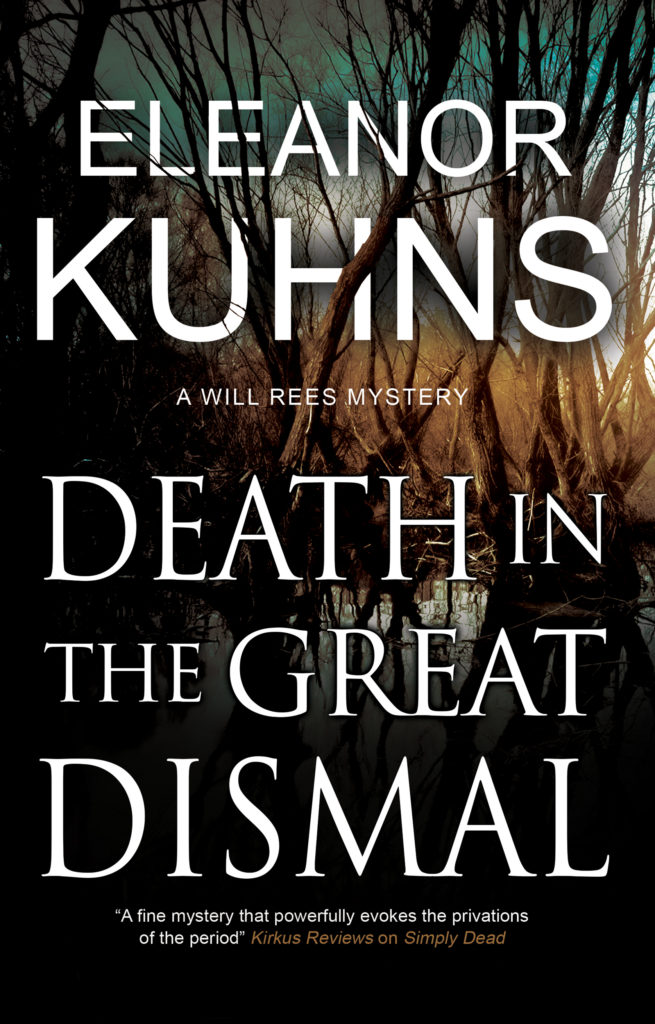After being delayed for several months because of COVID, the new Will Rees will be released in the United States on January 5.

The Great Dismal Swamp, the setting for the ninth Will Rees, is my favorite so far. Will and Lydia are asked by a friend, born free but sold down south and now escaped, to accompany him to the swamp to rescue his wife. Of course they agree, and several murders occur.
Yes, the swamp still exists. It is much smaller, though, than it was when George Washington first explored it (and first saw the potential for development.) But it still feels like a trackless wilderness. Bears and bobcats still live within the swamp as well as many species of birds and aquatic life. And insects, lots and lots of insects.
This is a peat bog and in some places the peat is fourteen feet deep. A man could be swallowed up with no one the wiser.
Many slaves escaped to the swamp. Estimates range from a few thousand to one hundred thousand. Many were caught but quite a few managed to make a life for themselves inside the swamp. These fugitives were called maroons.
When the escaped slaves fled to the swamp, they bedded down first under the pines. They grow only on the drier islands. Daniel Sayers, an archaeologist has been excavating these drier patches and has found evidence of small communities.
Most of the swamp resembles an impassible green curtain.
Now the swamp is passable via boardwalks. This one leads to a memorial honoring the maroons.
